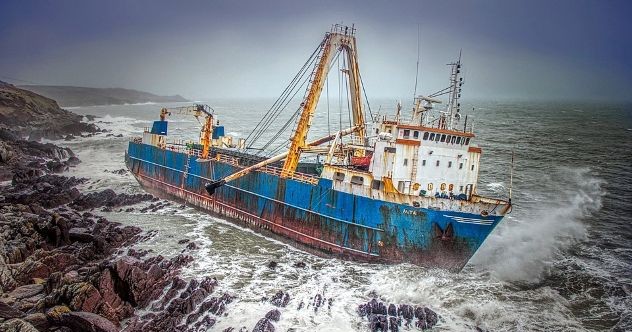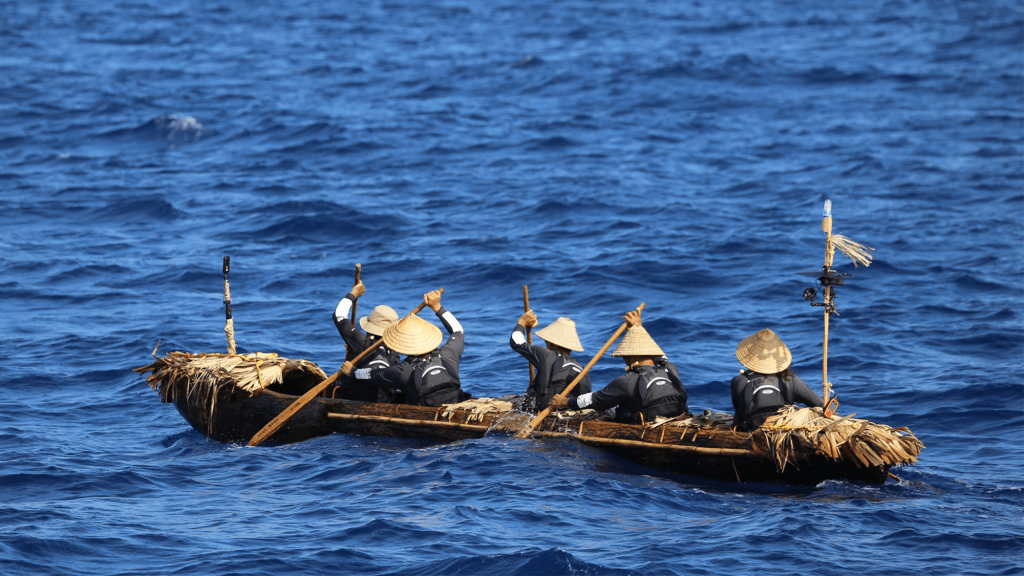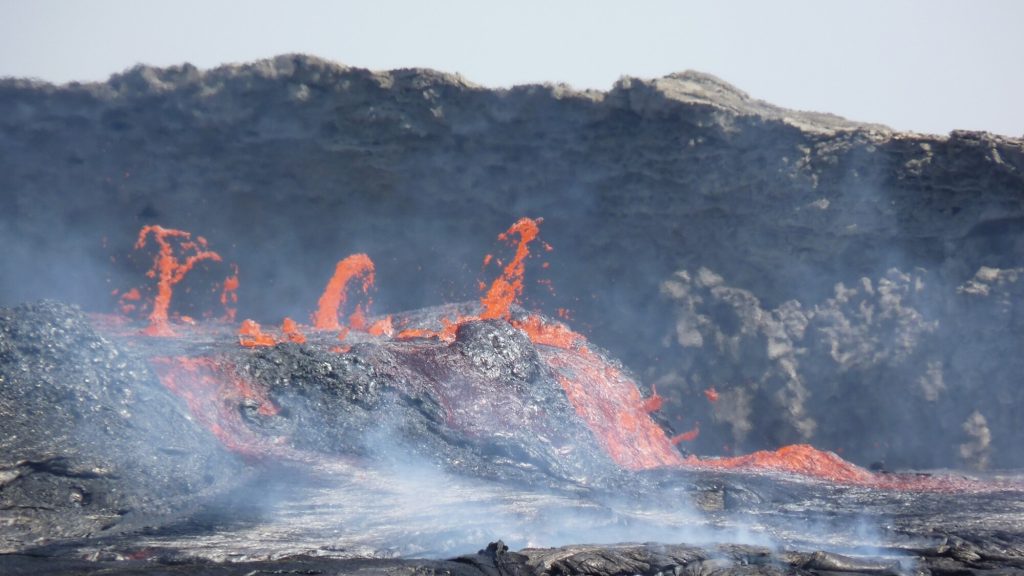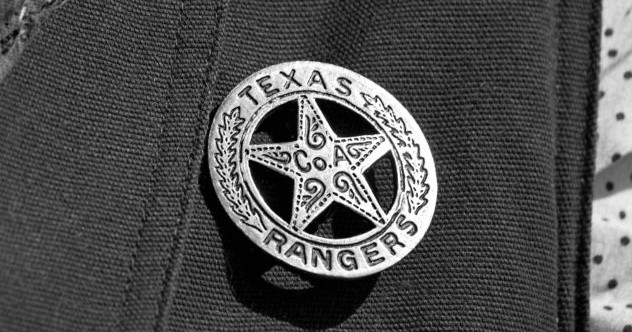Now Reading: Top 10 Haunting Facts About the Ghost Ship MV Alta
-
01
Top 10 Haunting Facts About the Ghost Ship MV Alta
Top 10 Haunting Facts About the Ghost Ship MV Alta

In the pantheon of maritime mysteries, few tales are as strange and compelling as that of the MV Alta. It is a story that begins with a 44-year-old cargo ship, abandoned by its crew and left for dead in the vast emptiness of the mid-Atlantic. What followed was an incredible 496-day solo voyage, a phantom journey across thousands of miles of ocean, guided only by wind and current.
The ship’s odyssey ended not in a scrapyard or at the bottom of the sea, but in a final, violent embrace with the Irish coast, where it became a modern maritime legend. The saga of the Alta captured the global public’s imagination, a testament to the ocean’s raw power and a symbol of its enduring mysteries. From whispers of piracy to the harsh realities of environmental risk and legal limbo, this is the story of the ghost ship of Ballycotton—the MV Alta.
Related: 10 Fabled Shipwrecks That Have Yet to Be Found
10 The Rusting Sentinel of the Irish Coast
MV Alta Shipwreck Ireland Ballycotton co. Cork aerial 4K video
The final, silent chapter of the MV Alta’s long story is being written by the relentless power of the North Atlantic. What was once a 253-foot (77-meter) cargo vessel is now a permanent, decaying feature of the County Cork coastline—a rusting sentinel standing watch as it is slowly consumed by the elements. The ship that survived a 17-month journey across the ocean could not withstand the force of the Irish coast. In early 2022, after being battered by a series of successive storms, the vessel’s hull finally surrendered, breaking the ship in two.
Recent drone footage from 2024 reveals a scene of profound decay. The two large sections of the ship now lie some distance from each other, almost entirely covered in rust, perched precariously on the jagged rocks. The stern section, where a crane hangs precariously over the sea, still retains a ghostly hint of its original blue paint—a faint memory of its former life. The rocks surrounding the bisected hull are strewn with large, jagged pieces of rusted metal, remnants of a structure being torn apart piece by piece by the wind and waves.
After the wreck grounded, Irish authorities considered several options, including towing it out to sea and scuttling it, or launching a complex and costly operation to scrap it on-site. However, the ultimate decision was to do nothing.[1]
9 The Curse of the Unwanted Tourist Attraction
Ghost Ship – M V ALTA After the fire
While the world was captivated by the romantic notion of a modern ghost ship, the reality for the small, quiet community of Ballyandreen was a nightmare. The “one in a million” arrival of the Alta transformed the isolated stretch of County Cork coastline into an international media sensation and a major, unwelcome tourist attraction. Initially, local businesses saw a boon from boat tours ferrying sightseers to view the hulk. However, this curiosity quickly curdled into a curse for the residents whose lives and properties stood in the way.
The influx of visitors, described by one local farmer as “a herd of sheep aimlessly and blindly following each other,” brought a litany of disturbances. The lands around the wreck are private farms, but this was ignored by thousands of people who cut fences, trampled crops, and walked through gardens—and even across the flat roofs of cottages—to get a better view. Landowners who tried to protect their property reported facing aggressive and hostile groups, turning their own land into a source of conflict and fear. The situation became so dire that the council repeatedly issued warnings for the public to stay away, citing the wreck’s dangerous and unstable condition, as well as the treacherous cliffs.
The problems escalated far beyond simple trespassing. In April 2021, a fire engulfed the ship’s bridge—an act locals are convinced was arson. Even more terrifying for residents, a major cliffside fire, believed to have been started by visitors camping near the wreck, burned for seven days, forcing the evacuation of nearby homes.
The wreck also attracted “nighttime scavengers” with head torches and tools, who were seen stripping the vessel of valuable metals. One farmer reported that ladders stolen from his sheds were later found at the wreck site, while another recounted how trespassers caused a cattle stampede that resulted in a cow suffering a broken leg. The human cost was immense, with locals speaking of a total loss of privacy, constant fear, and a profound change in their attitude toward outsiders.[2]
8 The Fury of Storm Dennis
Storm Dennis wrecks havoc across UK
The MV Alta’s epic, silent voyage across the Atlantic came to a sudden and violent end on February 16, 2020, courtesy of Storm Dennis. The storm was a major weather event, battering Ireland and the UK with hurricane-force winds and causing widespread flooding. It was this meteorological fury that provided the final, decisive push—grabbing the 2,530-ton (2,295-tonne) derelict and driving it hard onto the rocky shoreline of Ballyandreen Bay.
The massive, rusting vessel was first spotted snagged on the rocks by a jogger near the fishing village of Ballycotton. The sudden appearance of the cargo ship, seemingly from nowhere, stunned local residents and authorities. John Tattan, the lifeboat operations manager for the Ballycotton Royal National Lifeboat Institution (RNLI), famously described the event as “one in a million.” He expressed utter astonishment that an abandoned vessel of its size could drift for so long and end up on their coast, telling the Irish Examiner he had “never, ever seen anything abandoned like that before.”
Tattan was particularly bewildered that it had somehow navigated the busy fishing grounds off Ireland’s southern coast without being detected. The Waterford Coast Guard, equally amazed, simply called its journey “amazing.” While ghost ships are not entirely unheard of in Irish maritime lore—the 1886 case of the Norwegian barque Maury being found derelict off the Waterford coast provides a historical parallel—the arrival of the Alta was a truly singular event in the modern era.[3]
7 The 496-Day Phantom Voyage
250-Foot Ghost Ship Reappears 2 Years After Disappearing Near Bermuda
After its ten-man crew was rescued in October 2018, the MV Alta was left derelict and adrift, beginning one of the most remarkable phantom voyages in modern maritime history. For 496 days, the ship drifted crewless across the Atlantic, covering an estimated 2,300 nautical miles. Its exact course remains a mystery, as its AIS was not functioning, leaving no electronic breadcrumbs to follow.
Its journey was dictated not by a captain’s hand but by the inexorable forces of the ocean. Marine experts believe the ship was caught in the powerful currents of the Gulf Stream, which carried it on a long, looping path—first eastward toward the coast of Africa, then north past the Iberian Peninsula, and finally into the Celtic Sea, where it met its fate in Ireland.
Sophisticated modeling of ocean currents, conducted after the fact, is the only way this probable path has been pieced together. By sheer chance, the ship managed to stay clear of the Atlantic’s major shipping routes, which is a primary reason it remained almost entirely unseen during its epic journey.
Almost—but not entirely…
The only confirmed sighting of the ghost ship during its 17-month voyage occurred in late August or early September 2019. The Royal Navy ice patrol ship HMS Protector was sailing through the mid-Atlantic on its way to the Bahamas to assist with hurricane relief efforts when its crew stumbled upon the mysterious, drifting vessel. The naval crew attempted to make radio contact but was met with silence, confirming the ship was unmanned.
Intrigued by their discovery, they photographed the derelict and logged the encounter with maritime authorities before continuing their mission. This brief, ghostly encounter in the vastness of the ocean only served to deepen the enigma of the Alta.[4]
6 A Murky Interlude: Hijacked in Guyana?
The Modern-Day Ghost Ship: The Haunting Story of MV Alta
The most enigmatic chapter in the MV Alta‘s story is a murky, unproven tale of piracy that adds a layer of criminality and intrigue to the saga. After the crew was rescued in October 2018, the ship’s movements became uncertain. It is during this “lost period” that a persistent but unverified report emerged, alleging that a salvage attempt went horribly wrong.
According to this narrative, which originated on the website Marine Bulletin and was cited by numerous media outlets, the Alta was taken under tow with the destination of Guyana. It was during this tow, the story goes, that the vessel was hijacked by pirates and subsequently abandoned at sea for a second time. This claim, while unconfirmed, is bolstered by reports that the vessel had a history of encounters with pirates. Several sources mention that the ship was the target of a hijacking in 2007 off the coast of Guyana and, after being recovered, was the subject of a second attempted hijacking.
This alleged history suggests the Alta was a vessel that operated in risky waters and may have been a known quantity to criminal elements in the region. The speculation was further fueled when the maritime news site Fleetmon reported it had received correspondence from an individual claiming to represent the owner. This person allegedly told Fleetmon that the ship had been hijacked twice from Guyana while the salvage operation was underway.
Despite these tantalizing claims, the hijacking story has never been officially verified. Irish authorities and the official MCIB report consistently refer to it as an “unverified report,” and what truly happened in the months following the crew’s rescue remains unclear. The mystery of this period, filled with the specter of modern-day piracy, has become a cornerstone of the MV Alta‘s legend.[5]
5 Rescued from the Eye of the Storm
After the Storm – Mv ALTA (Feb 2025)
At the heart of the MV Alta’s ghost story is a dramatic tale of human survival against the odds. In September 2018, the ship was undertaking what marine analysts called an “ambitious” voyage for a vessel of its age and type, sailing from Greece to Haiti. Deep in the mid-Atlantic, it suffered a catastrophic main engine failure that the crew could not repair. Suddenly, the ten crew members were stranded, adrift more than 1,380 miles (2,200 km) southeast of Bermuda.
Their situation grew more desperate with each passing day. The crew, a mix of Honduran, Panamanian, and Greek nationals, was adrift for nearly 20 days. Their food supplies dwindled to just a two-day reserve. Ashore, the ship’s owner was scrambling, attempting to hire commercial tugboats from as far away as Venezuela, Guyana, and the Bahamas; however, all these efforts ultimately failed.
The crew was alone and running out of time. The United States Coast Guard was alerted to their plight, and the cutter Confidence was dispatched to their location. On October 2, 2018, in a critical humanitarian mission, a USCG C-130 Hercules aircraft flew from North Carolina to the ship’s location and executed a successful airdrop, providing the stranded sailors with a week’s worth of life-saving food and water.
With supplies replenished, initial plans were made to tow the disabled ship to safety. However, the Atlantic had other ideas. The rapidly approaching Tropical Storm Leslie, which would soon intensify into a hurricane, made any salvage attempt impossible and put the crew in mortal danger. The priority shifted from saving the ship to saving the men. On October 8, a decision was made to abandon the vessel. The crew of the MV Alta was rescued by the U.S. Coast Guard and transported safely to Puerto Rico, leaving their ship to the mercy of the storm and the sea.[6]
4 A Vessel with a Shady Past
AIS: Most Comprehensive Video on Maritime Tracking Technology!
The MV Alta‘s final, mysterious voyage was not an anomaly but the culmination of a long and troubled history. The vessel that washed up on the Irish coast was a ship with a shady past, whose operational patterns in its later years foreshadowed its eventual fate as an abandoned derelict. It was built in 1976 at the Tronderverftet shipyard in Norway and began its life as the MV Tananger, a respectable general cargo ship. But over its 44-year career, it became a chameleon of the seas, operating under at least seven different names, including Pomar Murman, Polar Trader, Avantis II, Avantis I, and Elias, before its final incarnation as the Alta in 2017. (Sailors have long considered it bad luck to change a ship’s name.)
This constant changing of identity was accompanied by a shift to so-called “flags of convenience.” As the ship aged and its value declined, its registration moved from the reputable Norwegian flag to those of Malta, Panama, and finally Tanzania. This is a common practice in the shipping industry, often employed by owners to take advantage of lower operating costs, less stringent safety and labor regulations, and greater corporate anonymity. The ship’s behavior also became more suspicious. In its later years, while operating mostly in the Mediterranean, the Alta was known to periodically switch its Automatic Identification System (AIS) off and on.
Deactivating AIS is a major red flag in the maritime world, as it is a tactic frequently used by vessels engaged in illicit activities like smuggling, illegal fishing, or evading international sanctions. This history of suspicious behavior casts its final, ill-fated voyage in a new light. The journey from Greece to Haiti was described by marine analysts as highly “ambitious” and unusual for a vessel of its age and type. The Alta was a ship designed for shorter, “near continental trade” in relatively sheltered waters, not for grueling transatlantic crossings. Pushing an aging vessel with a questionable maintenance history on such a demanding route was a gamble that ultimately failed.[7]
3 The Legal Ghost: A €10 Million Problem with No Owner
‘Ghost ship’: Why did this vessel wash up in Ireland without any crew aboard?
When the MV Alta crashed onto the rocks at Ballycotton, it brought with it not just a captivating mystery but a complex and frustrating legal quagmire. The wreck immediately became a multi-million-euro problem for Ireland—a problem with no apparent owner to hold responsible. From the very beginning, establishing ownership was the primary challenge for Irish authorities.
The last known registered owner was a shadowy entity named Alta Sg LLC 28, but even its flag of registry was disputed. Some reports indicated it was flagged in Panama, while others pointed to Tanzania. The official MCIB report later clarified that the vessel had been deleted from the Tanzanian registry in December 2018, two months after its abandonment. This meant that by the time it grounded in Ireland, the MV Alta was effectively a stateless vessel—a true legal ghost.
Under Ireland’s Merchant Shipping (Salvage and Wreck) Act 1993, the legal responsibility for dealing with the wreck fell to the Irish state. The Revenue Commissioners were appointed as the official “Receiver of Wreck,” tasked with the near-impossible job of identifying the owner, who would then be liable for all costs associated with the cleanup and removal. Although an individual purporting to represent the owner did make contact with authorities, their bona fides were never proven, and legal ownership was never successfully established. The owner, like the ship itself, remained a ghost.
The legal complexity was compounded by a critical gap in international law. Ireland, unlike many other maritime nations, has not ratified the 2007 Nairobi International Convention on the Removal of Wrecks. This key convention mandates that owners of large vessels maintain compulsory insurance specifically to cover the costs of wreck removal. Because Ireland is not a signatory, it could not leverage this powerful international framework to pursue an insurer for payment—even if one could have been identified. This left the Irish taxpayer solely responsible for the bill.[8]
2 The Environmental Gamble and the Helicopter Heist
“Ghost Ship MV Alta: 2 Years Lost at Sea Before Crashing in Ireland”
In the immediate aftermath of the grounding, the greatest fear was of an environmental catastrophe. The sight of a massive cargo ship smashed against the scenic and ecologically sensitive Cork coastline raised immediate concerns about a major oil spill. An initial assessment brought some relief: the MCIB report noted that the ship’s main fuel tanks were found empty and open to the sea, leading to the assumption that most of the fuel onboard had already been lost and dispersed by the fury of Storm Dennis during the grounding.
However, the danger was far from over. A marine contractor who boarded the vessel found that while there was no cargo, there were numerous sealed containers of oil and other hazardous materials essential for the ship’s operation still on board. These barrels posed a significant and ongoing pollution risk. In response, just ten days after the grounding, Cork County Council initiated a complex, high-stakes operation to remove these pollutants.
A team from the marine contractor LCF Marine boarded the unstable, wave-battered wreck. Over several days, in a mission that was both dangerous and delicate, a helicopter was used to airlift approximately 95 barrels from the ship. Of these, 62 were full of oil and other contaminants. The barrels were flown to a prepared drop-off zone on the cliffs above before being removed by an environmental agent.[9]
1 The Making of a Modern Legend
Alta Shipwreck – Can It survive winter 2025 ?
The story of the MV Alta captured the global imagination and cemented its place in maritime lore because it was a perfect storm of mystery, drama, and modern intrigue. It contains all the classic, irresistible elements of a timeless ghost ship legend: a vessel found derelict with no crew, a dramatic life-or-death rescue on the high seas, an epic, unguided phantom voyage across an entire ocean, and tantalizing, unproven whispers of pirates and hijacking.
This potent combination of known facts and speculative mystery created a narrative that was simply too compelling to ignore. Unlike historical tales like the Mary Celeste, the saga of the Alta was uniquely visual and unfolded in the digital age. The story was not just told in print but was seen in real-time through stunning drone footage, haunting photographs shared across the globe, and even its eventual appearance as a permanent feature on Google Maps. This visual spectacle made an abstract maritime mystery tangible and shareable on a global scale. The wreck became a physical landmark for a digital legend—a place people could see and visit, both virtually and in person.
It is also a quintessentially modern ghost ship story. The investigation into its journey involved analyzing AIS tracking data—or, crucially, the lack thereof. Its probable path was reconstructed using sophisticated satellite modeling of ocean currents. The legal fallout hinged on the complexities of international maritime conventions and the use of flags of convenience. A significant part of the story was driven by online communities of sleuths, urban explorers, and sightseers who meticulously dissected every detail of the ship’s fate.
Ultimately, the MV Alta has transcended its status as a mere shipwreck. It has inspired art exhibitions dedicated to imagining its lonely journey, musical compositions set to footage of the wreck, and endless online discussions that continue years after it grounded. Though the physical vessel is slowly being erased by the relentless sea, its legacy endures. The story of the MV Alta serves as a powerful testament to the unpredictable and untamable nature of the ocean, a stark illustration of the weaknesses and loopholes in our global systems, and a reminder of the deep, timeless connection between humanity and the sea. It proves that even in our hyper-connected, all-seeing world, the ocean can still create—and keep—the most profound secrets.[10]
fact checked by
Darci Heikkinen























